Wonderments of Cosmos Seminar 3: Allen Abramson
By Lucy M J Calder, on 1 May 2014
 The third Wonderments of Cosmos seminar took place on 11th March 2014 and the main speaker was Allen Abramson, a senior lecturer in the Anthropology Department, who gave us a brilliantly entertaining and thought-provoking talk which really requires listening to in order to fully appreciate. The entire seminar (audio) can be downloaded HERE.
The third Wonderments of Cosmos seminar took place on 11th March 2014 and the main speaker was Allen Abramson, a senior lecturer in the Anthropology Department, who gave us a brilliantly entertaining and thought-provoking talk which really requires listening to in order to fully appreciate. The entire seminar (audio) can be downloaded HERE.
The talk was followed by responses from Donnacha Kirk (UCL Anthropology) and Klaas Hoek (Slade School of Fine Art), and then a general discussion. I am sharing Allen’s notes below.
OF WONDERMENTS THAT CONVERGE: OR CAN HUMANITY BE UNIVERSALISED THROUGH THE PERSUASIVE LURE OF COSMOS?
(Notes by Allen Abramson)
Introduction
- Thank you to all, audience included. People from different faculties. Great! It is my theme: cosmos as unifying, and unifying today. In what way is cosmology unifying today? Does scientific cosmology hold a privileged cultural place in this processs?
- Ofer took the opportunity to smuggle into his presentation pub-talk that he wouldn’t normally present to colleagues. In this talk, I want to end up by speculating in a way that I might only get away with at an interfaculty assembly: and indeed I may well not get away with these speculations even here: an exercise in speculation
- In particular, Ofer brought in from the pub the suggestion that it might have been better if the Cold War hadn’t ended, if the internet hadn’t intensified contact between East and West, and if instead, independently of each other, scientific cosmologists were still beavering away within the sheltered confines of their own traditions. So that we might see a broader band of theoretical possibility rather than an emerging consensus amongst scientists on what the cosmos is.
- In this talk, I want to address the question of unity and diversity in cosmological thinking and social practice broadly conceived. And, in particular, to assess the extent to which a consensual contemporary cosmology is likely to extend consensus outside of itself into a divided cultural world.
I’ll be talking about:
- Scientific cosmology but also…
- Practices that are not cosmological per se but which are quasi-cosmological or are ‘becoming-cosmological’
- That technically orient towards intimations of infinite space-time (in ‘big’ or ‘smooth’ space –Deleuze and Guattari. A project in the anthropology of ‘big space’)
- where they intersect and hybridise with explicitly cosmological models and narratives.
I start with some characters who you may not have heard of but who deserve a mention.
A.SOME SUBALTERN COSMOLOGISTS
- Giordano Bruno’s martyrdom (burnt at the stake) in 1600 (Dilwyn Knox spoke about him during the first seminar)
- Dominico Scandella (‘Menocchio’)- a miller, and leader of the town council – burnt to death in 1599
Declared that Creation emanated from a chaotic mix of the primary elements
 “…that, in my opinion, all was chaos, that is, earth, air, water, and fire were mixed together; and out of that bulk a mass formed – just as cheese is made out of milk – and worms appeared in it, and these were the angels…and among that number of angels there was also God, he too having been created out of that mass at the same time…”
“…that, in my opinion, all was chaos, that is, earth, air, water, and fire were mixed together; and out of that bulk a mass formed – just as cheese is made out of milk – and worms appeared in it, and these were the angels…and among that number of angels there was also God, he too having been created out of that mass at the same time…”
Many think he was a fore-runner of our modern cosmological views.
- David Birnbaum 1998-2008
– Jewish jeweller from the Bronx. Has published 2 books on cosmology: Summa Metaphysica Vol I God & Evil; Vol II God & Good; 2010 Cosmic Womb of Potential)
Unified the fields of science and religion through “the Quest for Potential theory”: Q4P or Q4P∞
 “The universe is itself potential, actualising itself” in a process called ‘extraordinariation’…The cosmic trajectory is from the bottomless VOID to the limitless EXTRAORDINARY.”
“The universe is itself potential, actualising itself” in a process called ‘extraordinariation’…The cosmic trajectory is from the bottomless VOID to the limitless EXTRAORDINARY.”
There are many other mavericks presenting different types of cosmology – anthropologists find this interesting.
E.g. Jim Carter 2012 The Living Universe. A New Theory for the Creation of Matter in the Universe
“..rejects quantum physics, arguing that the universe is actually composed of minuscule doughnut-shaped particles called circlons
In Cosmologies in the Making 1990 – more mainstream for modern cosmologists – Norwegian anthropologist Fredrik Barth showed how in Mountain OK societies in Papua New Guinea, some men were continually involved in elaborating different cosmologies.
The significance of these amateur/maverick world-makers and their cosmologies:
The grassroots are cosmologically charged up and active/vibrant
The grassroots are normally eclectic and contradictory but periodically irrupt and ‘purify’. Anybody can become a system builder – the concepts are there, waiting for us to burst through.
The grassroots always contains trends towards heterodoxy
The grassroots and official canopy together indicate the likelihood of cosmological pluralism. Surplus cosmology.
Doesn’t bode well for Primack & Abrams’ argument in The New Universe and the Human Future 2011
B. JOEL PRIMACK AND NANCY ABRAMS
The main points that Abrams and Primack are making are:
- Double-Dark scientific view of the cosmos is not only scientifically accurate, but it
- Inaugurates a radical unification of fact & value, science & meaning, theory and morality (healing the rupture brought about around the time of Newton, between science and human meaning). Cosmological model in an ivory tower. The end of what Latour calls ‘the War of the Worlds (between different cultural values).
- Tends to transcend cosmological, religious and moral division, globally speaking.
- Will spread outwards to become popular culture as well as dominant science
5 reasons why P & A think Double Dark Theory can be unifying:
It’s true: coherent; explanatory; evidential; predictive
Subsumes elements of many previous cosmologies (energy; infinity; invisible forces) and is the best variant of them therefore (Einstein/Newton; Newton/the Bible/Ancient astro-religion). It subsumes pluralism inside itself.
Produced transnationally by a cosmopolitan community of scientists and cosmologists
Emerges at a time of increasing splintering and ethno-religious war –the world needs it, functionally speaking
Continues to de-centre the universe and demote human beings BUT makes the species central in other ways
Half way through the life of the universe; half way between the sun and the far edge of our galaxy; the only known place where the cosmos becomes aware of itself: only at this cosmic point the place where universe ‘chose’ to make itself amenable to the cosmic form that could think it in its entirety
What is the evidence that people find redemptive properties in scientific cosmology? Some research from the internet:
Mathew Fox, theologian of Creation Spirituality reviews The New Universe…
“As a theologian, I hear this as a clarion call to rediscover the apophatic Divinity, the God of Darkness…A transcendence that is not “up” so much as deep down, into the depths of things where all is dark and all is silent and beyond naming but where creation and new birth gestate in the invisibility of the cosmic womb, where all that dark sea and dark energy and dark matter dwells. A call to silence. A call to depth; a call to divine Nothingness. No-thingness. Only relations.” http://theinterfaithobserver.org/journal-articles/2013/5/15/a-review-of-the-new-universe-and-the-human-future.html
Menocchio? Birnbaum? Double Dark Theory (DDT)? Converging as P & A say?
Modern cosmology seems to be a perfect paradigm to merge with our own religious trajectories.
I want to argue “Yes”: but for different or supplementary reasons
DDT becomes critically persuasive as part of a culturally unifying tendency larger than itself.
C. FOUR SCENES OF CONTEMPORARY TRANSITION
Mini-analyses of recent transitions in Euro-American social contexts: religious, economic, playful and cinematic
Each is a fundamental break in the sense of where human social being is spatio-temporally located
Each transition
- is a different scene of practice & different cultural point of departure
- is a transmitted repertoire of possibilities defining the field of the practice against other fields (‘institutional memory’)
Two scenes are frankly cosmological, the others imply weakly conceptualized notions of the new space-time
SCENE ONE: THE SCENE OF CONTEMPORARY RELIGION
The sacred is becoming:
Less a power that can be figuratively personified and ritually incarnated as a distinctive figure e.g. Catholicism
Less of an embodied dialogue between conscience and personalised manifestations of god (soul) e.g. Protestantism
More of a significant ‘becoming’ within an infinite cosmic sphere
Spirit (charismatic Protestantism; prevalently secular religiosity; Theos; work of Lorna Mumford and Galina Ustinova in the Anthropology department) 70% of people who say they don’t believe in God, do believe in Spirit of some kind.
‘Energy’ (‘New Age’ religion), including astrology
http://www.telospress.com/adorno-on-astrology/
Religion has broken out of its in-worldly carapace
No longer a Heavenly enclave on Earth
remaining in-worldly but turning outwards towards big space – high on abstract energy, low on discernable figures (god) – that is infinitely sacred. De-deified.
SCENE TWO: THE SCENE OF CONTEMPORARY ECONOMICS
Before: High modernity where Capital
- primarily invested in machines, industries, factories, plants, companies
- Assembled, organised, integrated, processed…
- Nationally encompassed by nation states; infra-structurally national
- extended its reach outwards as empire
- Concentrated as monopoly
- embodied by ‘captains of industry’ (Weber), directors, managers, foremen
 Prevalent mode of economy punctuates, folds and involutes the flow of Capital ->
Prevalent mode of economy punctuates, folds and involutes the flow of Capital ->
Quasi-militarised self-enclosed economic spheres
Popularly conceived as a complex machine or body that self-encloses to bring about production even as it opens to the environment to absorb (raw materials) and excrete (waste-product)
 Weber’s view: this modern economic machinery is spectrally underpinned by a model of reformed religiosity in which individuals abandon the ritual manipulation of a finite god, turn inwards from his other-worldly infinity, and partake of his infinite grace in the rationally instrumental completion of a finite Creation (viz. instrumentality is displaced from ritual to techno-economy)
Weber’s view: this modern economic machinery is spectrally underpinned by a model of reformed religiosity in which individuals abandon the ritual manipulation of a finite god, turn inwards from his other-worldly infinity, and partake of his infinite grace in the rationally instrumental completion of a finite Creation (viz. instrumentality is displaced from ritual to techno-economy)
 In the anthropologist Marshall Sahlins’ view, the mechanistic holism of modern economy is underpinned by the poignant imagery of The Fall in which the incompleteness of god-created human being in exile is economically reflected in perpetual ‘need’ and addressed by the capitalist promise of capitalist growth, abundance, prosperity and human satisfaction/completion
In the anthropologist Marshall Sahlins’ view, the mechanistic holism of modern economy is underpinned by the poignant imagery of The Fall in which the incompleteness of god-created human being in exile is economically reflected in perpetual ‘need’ and addressed by the capitalist promise of capitalist growth, abundance, prosperity and human satisfaction/completion
Now: late-modern Capital:
Morphs through the dominance of finance capital
Dividends are accrued (or not!) along long ‘lines of economic flight’
Complex chains of under-written debt
Seemingly stretches outwards to infinity
Economic space of increasingly undecipherable complexity (mathematicians and physicists)
Capital becomes virtual, fleeting, spectral: known only by its traces
Iconic images (cinematic and ethnographic) of The Trader as edge-workers peering fearlessly towards implosion & black-hole http://www.edge.org/response-detail/23825 “The Black Hole of Finance” Seth Lloyd 2014
(Sexual) Master of the Universe, Lord of the Abyss
In the wake of ‘Electronic Big-Bang’
F-Capital and F-Trading suffused by cosmic images of void, chaos, inflation and infinity
SCENE THREE: THE SCENE OF CONTEMPORARY PLAY
Before: High modern play
Dominant ludically and culturally
Simulates war and turns competition, conquest and subordination into primary social relations of high modernity
Aims for sovereignty over human opponents
Finds a popular Champion (analogy with Carnival)
Expands the range of championship and sovereignty over increasingly distant opponents
Played out in confined and controlled spatial environments (arena; stadia)
Telescopes historical process in both calendrical and recreational space and time to…
create pure (popular) sovereignty within a strictly enclosed (recreational) space-time
Now: Late modern play
Edgework becomes dominant ludically and culturally
Simulates survival in extreme and/or precarious environments: primary social relation of late-modernity
Aims for increasing and repeated mastery of body and technology (not opponents) on the edge of death and expiry
Quasi-heroic agents (not champions)
Pushes limits outwards along external non-human environmental lines (rather than towards the opponent’s inner weakness)
Played out on a continuum stretching from the ‘natural’ to the artificial: abolishes their binary opposition
Typically unconfined or tending towards (e.g. climbing walls break out; marathons break out; surfing breaks out onto cement & snow)
Telescopes historical process in space and time but breaks out of calendrical cycle
Merges more with the space-time of its symbolised primary relation than ‘traditional’ sport: (is more realistic; more dangerous)!
Creates variable body/technology/environment relations of survival on the controllable edge of chaos
All this suggests that it’s in play that the new future exists.
THE SCENE OF PHANTASTIC OTHER WORLDS (POWs) IN LATE-MODERN CHILDISH ADULT LITERATURE, FILM AND ANTHROPOLOGY
Before (in high modernity): POWs were (majorly):
‘Out there’ separated by distance and ideally sea or (outer) space (Journey to the Centre of the Earth; ‘primitive societies’ – anthropologists such as Malinowski. Anthropology, while studying difference, was also studying our origins.
Valued for harbouring some lost knowledge, lost relation, lost relative
Left behind or stolen
Quest to retrieve, bring to the centre and unite Self & Other
Journey outwards to retrieve and complete what is lost
Shamanic or divinatory (e.g. Astrology)
Primordially distant space-time to be retrieved & re-integrated
Now: POWs
Spring from the grounds of the here-and-now. Fantastic other worlds are accessed in the here and now.
Entered through or with common objects (e.g. Pokamon playing cards; Bey-Blade spinning-tops; BenTen’s omnitrix; The Subtle Knife in His Dark Materials).
“Infinity and Beyond” (Buzz Light-year Toy Story I)
Are contained within the space-time of the here-and-now as virtualities/potentialities
Anthropology enters these worlds with ethnographic method now an objectified technique rather than a talent or ‘personal touch’
Retrieve nothing or only the means of exploring outwards
The present as an opaque container of many possible futures
The banal here-and-now itself as a rich cosmic opacity capable of being opened out into space-times that stretch ordinary being outwards
FOUR SCENES…
BUT A COMMON THREAD:
- break-out from cosmic enclave of ‘iron cage’
opening out of hierarchically enclosed organisation
cessation of discontinuity within itself and with external environment
Instead the former cosmic enclaves:
- Turn ‘inside-out’ onto big space that is infinite, continuous, smooth…the iron cage has melted…
- Uncontrollable, precarious, de-stabilising….
- Distinct in each cultural instance (spirit; energy; void; chaos)…
- Only weakly elaborated & defined…
- Tending towards the same image of smooth space… tend towards infinity..
- Without actually reaching the point of actual identity
3 QUESTIONS
How are we to understand this generalised break-out onto the cosmic continuum? The similar trope of big space and big time. What contributes to its generalisation?
How might it speak to the persuasive power of scientific cosmology? And to P & A’s anticipation that SC will culturally unify?
What might it tell us about ‘wonderments of cosmos’?
Q. How are we to understand this generalised break-out onto the cosmic continuum?
- Spreading out of a zeitgeist, (‘spirit of perfect integration’ replaced by ‘spirit of infinite unboundedness’) -> ramifying isomorphism (mystical!)
- Coincidental convergence of culturally particular scenes upon the common space-time of the infinite (unlikely!)
- Common image (of break-out into smooth space) permeating & interfering with singular scenic unfoldings…
- Supplied by deep presence of neo-liberal state -> perennially break-apart, detach & cut loose -> media-scape
A: As decomposition & break-out channelled through the body-politic to component levels/scenes
Q. What might the observation say about the persuasive power of scientific cosmology?
Bears upon the cultural traction of its discourse
High Modernity: post-Copernican cosmology contemporary but not of its time
Elevated but cloistered/marginalized, weak cultural influence
Usurped by philosophies and biologies of earthly Nature
Late Modernity: Post-Copernican cosmology strong cultural influence i.e. Hadron Collider; most recent telescope pictures from outer space; Mars mission; God Particle; Gravity; Sexy presenters: Brian Cox and …; Paralympic opening ceremony)
Metaphorically widespread
A. Scientific cosmology both contemporary & of its time
Sexy Presenters of Scientific Cosmology
Opening ceremony of the Paralympics – Stephen Hawking
Scientific Cosmology (DDT):
Persuades & unifies because it is scientifically accurate? Yes.
Persuades & unifies because it resonates with the cosmic ‘infinitization’ of Society? Yes.
Metaphorically ramifies, hybridizes, becomes hegemonic as a conjunction of the above
P &A: right and unlikely
Increasingly engages not because it is scientifically right – it may be! – but because it culturally connects
What might it tell us about ‘wonderments of cosmos’?
I prefer the word ‘enchantment’..
people are re-oriented, re-born and grown
- precarious realm of infinite becoming (rather than of complete & finite being). We look out onto the terrifying enormity of cosmos, from the position of the terrifying smallness of ourselves, and from that position we grow.
- from a cult of Society, agency & the making of History to…
- a culture of life on the edge, self-mastery and cosmic becoming
THE END
Here are some notes from the 2 very fabulous respondents:
First respondent: Donnacha Kirk – researcher in the Astrophysics Department
Says he was already aware of David Birnbaum because their department is constantly bombarded with material from maverick cosmologists. He thinks it would be wrong to be cynical about this, as many scientists are. Even within the university there are too many divisions. It is better for scientists to be open-minded. However what we have to do with all of these theories, if we want to take them seriously, is to subject them to the same rigorous tests as scientific cosmology. This is where, he thinks, the work of people like Birnbaum falls down. It attempts to be a replacement cosmology, rather than a quasi cosmology, and it just cannot explain the evidence. He’s quite shocked that the theories we have manage to do so well, considering how simple the ingredients are.
However, these theories are perhaps more deserving of the term ‘cosmology’ than the theories in the astrophysics group. A more human and spiritual orientation. Although science has developed in leaps and bounds, there has actually been a huge retrenchment in the ambition of the scientific Cosmologists, since the Renaissance or the scientific revolution. As working scientists we should be happy that our ideas are appropriated and taken out of the sphere of scientific cosmology. We shouldn’t be proprietorial about these concepts. The ideas are going to be taken out in the wider world and applied literally, associatively, metaphorically and imaginatively in the fields of philosophy, religion, literature, art and even music. We can’t get defensive about that, and worry about people getting the physics wrong. But when you step outside and apply these ideas more metaphorically, you have to accept that there’s more than one way to do things. It’s not like an equation where you can derive step 1 from step 2 etc. You have to make an argument.
Because Allen sent him a copy of his notes, he read the Abrams and Primack book and he found it frustrating on many levels, on every page [general laughter from the audience]. it’s well worth reading! They make these ‘arguments’ about the modern description of the universe, and then on the next page they make an ideological or political argument as if it follows directly, and it doesn’t follow directly. It’s an interpretation, which is fine, but they don’t put it like that – they assume that this is the only interpretation from modern cosmology. What they recommend, after all their thinking, are sustainable growth and spending more money on renewable energy – it’s uncanny! A civil rights lawyer and a liberal academic come up with this: it’s almost as if that’s what they believed before they set out and did the exercise! Really it’s just a warmed up version of Carl Sagan’s ‘pale blue dot’ idea.
He shows the famous picture of Earth Rise. The idea is that once we step outside and see our planet from the outside, we should realise we are all in the same situation, on a tiny rock flying through space, and we should get on. he quotes Sagan. Admirable sentiments – Sagan was a political activist – a liberal man in the ’60’s. however Sagan and P&A do not convince that an understanding of the cosmos will radically re-orient you away from the ideas you already had in the first place.
He actually disagrees with Allen’s idea that ideas from modern Cosmology help give rise to a more unified human race – in fact he thinks the opposite and is more persuaded by the heterogeneous responses. Of course cosmological ideas will have a wider influence on society, but they seem to be used by the wider society as much as changing it. Is the current dark energy/dark matter revolution in cosmology really as significant as the Newtonian revolution (the clockwork universe idea) or the Darwinian revolution? They actually fit quite well within the physics we already have: dark energy can fit within Einstein’s theory. Dark matter looks much like ordinary matter. so it’s an open question whether they’re going to have such a profound influence. But Allen does have quite a strong argument that one way cosmology could permeate the wider consciousness is the idea of ‘big space’ or ‘smooth space’. Capitalism as infinite – the logic of the bubble. Not necessarily a new idea, even if perhaps it is more resonant. We should recognise that this is empty rhetoric – that these economic theories are standing in for real people and real material reality. He believes in these constraints and boundaries -the city in the cage – whether financial or personal. Can you even afford to participate in extreme sports? Play time for the rich and probably not relevant for the majority of people. The P and A book have a very frictionless idea of the way we view the world. there’s no violence in the book – no friction, no competition. That is where the ideas of Birnbaum etc fall down – they meet the reality of evidence and they fail, he thinks think mainly because they’re trying to do real cosmology and say how we should live, but they’re restricting themselves to scientific cosmology – ultimately sterile. If you don’t actually engage with fundamental realities then you’re not going to resonate. When a scientific concept is applied to bolster or persuade in a wider cultural sense, it’s going to work best when it respects reality. Working with the constraints. He thinks modern cosmology will eventually be brought in to our political and social systems, but we haven’t worked out how to do that yet.
Second respondent: Klaas Hoek, Slade School of Fine Art
The pale blue dot image is still up and he is glad because this is at the centre of one of his own interests in cosmology. When he started coming to the Slade, he found himself in a completely different situation than in Holland, because there the art schools are very separate from other academic disciplines. This is like a playground for him. He began to investigate the role of imagery within the sciences and soon he found out that the question was far too broad, so he narrowed it down to the role played by images in the production and dissemination of knowledge. Sent out a call to all specialists in all fields to make 2 drawings: one about something they make for themself to get their head around something – a problem they’re facing, and the other to show the problem to someone else. Inspired by seeing Watson and Crick’s models of DNA – scientists using similar tools to those used by artists.
He bought a copy of the New Scientist because the headline was ‘New map of the Universe,’ but he was utterly disappointed by this map because it didn’t appeal to his imagination, so he thought he would make his own map. Then he realised that making a map of the universe is first of all mapping the mappers. A map is always a portrait of those who map and their interests. Began to ask people around the university if they were interested in making a map of the universe – collaborators. He likes to think of an art school as a universe in itself, because it covers so many different areas of research. One of the things that intrigues him most is related to the terrifying infinite – what is lacking in most of the images he finds is the ‘horror’. What are the ways of dealing with the horror of this terrifying infinity? Could these quasi-cosmologies be ways of trying to comfort us against the thought of being completely lost and meaningless and insignificant?
Allen: In truth the terror of infinity lies at the very heart of modernity. These new scenes he’s been talking about are beginning to produce ‘enchanted’ relationships to the terror .The terror is only terrible to those breaking down in various ways, and they will experience it in different forms. Extreme sport is something he is serious about because people are experimenting with space, time and precariousness. They find the proximity to oblivion enchanting, and the cultural importance is that these ideas spread metaphorically. Scientific cosmology also spreads metaphorically e.g. the black hole of debt within economies. It seems natural for people to think culturally about these things, borrowing these images. Using quasi-concepts – trying to say something but haven’t quite put their finger on it. Actors playing on the border of infinity – this is where we are now.
There followed more intriguing discussion but you will have to listen to it on the audio – as during the previous 2 seminars we were left with a mind expanding number of ideas to think about later.
One Response to “Wonderments of Cosmos Seminar 3: Allen Abramson”
- 1
 Close
Close


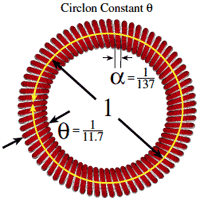




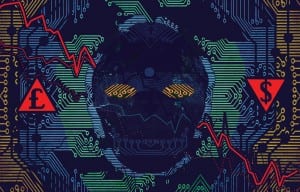
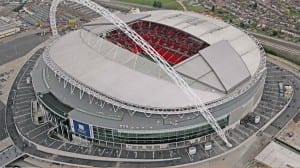





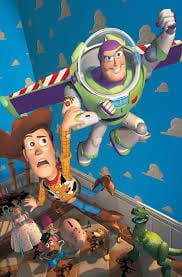

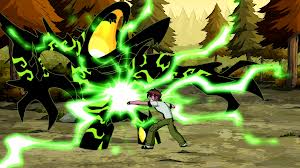




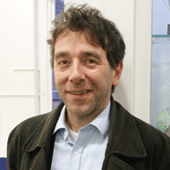
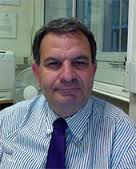
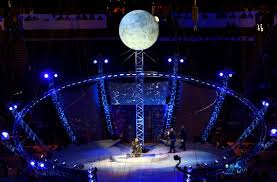
Read Dianne Weir’s “The Perfect Ruby” published by Strategic Publishing.